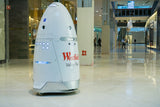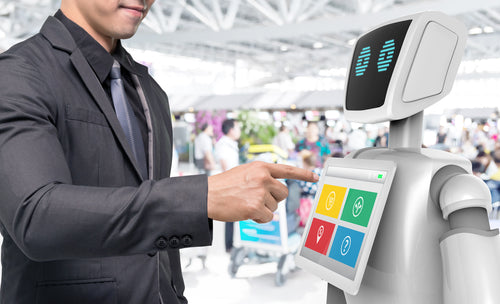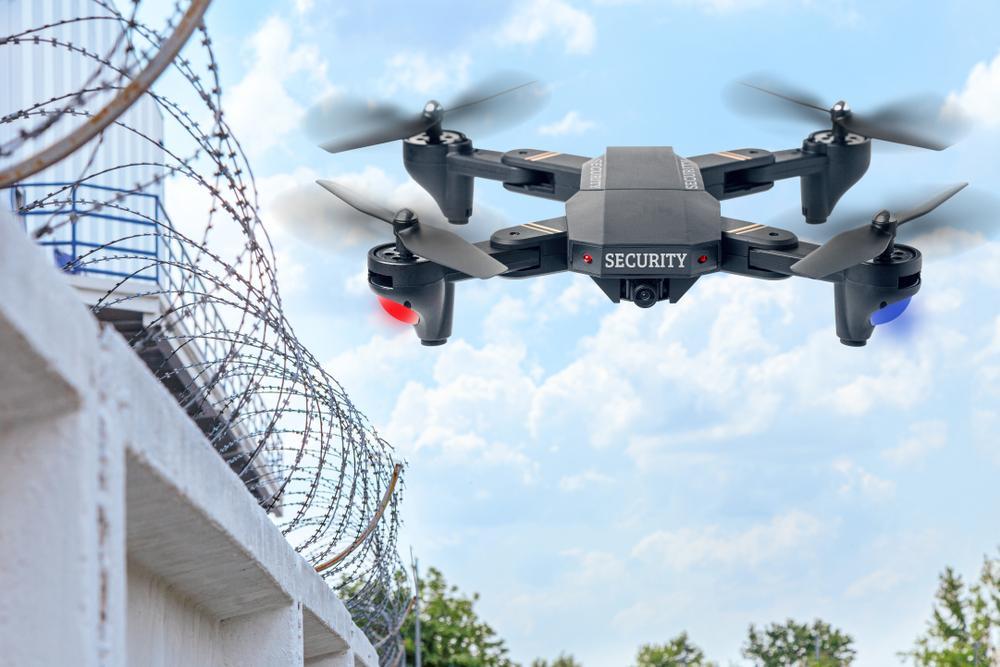In 2013, when a company co-founded by a former police officer after the tragic Sandy Hook shooting incident came up with a 400-pound robot to patrol crowded areas, there were many concerns on how it would turn out. In fact, some of the initial attempts at employing Knightscope’s K5 robot at malls and other public places were disappointing, with one robot running over a toddler’s leg and another falling into a water fountain.

But such incidents and the strong criticism that followed did not deter Knightscope from innovating further on their product. More importantly, the industry now increasingly realizes the potential of robots in physical security and more companies have come up with their own products.
As the quality of sensors and AI technology improves, we are set to see more machines being enlisted to support the security forces at work. According to Mordor Intelligence, the security robot market was worth $2.1 billion in 2018 and is set to grow at a CAGR of 7.93 percent to reach $3.3 billion by 2024. Here are a few factors that make robots in security appealing.
Wide scope for use
Although the increased popularity of surveillance cameras and access control systems have eased concerns on property crimes, monitoring commercial, residential, and public spaces continue to remain a costly and difficult affair.
For public and private organizations, robots and unmanned guard vehicles (UGV) offer a great solution that combines traditional surveillance technologies with a modern AI-based mobile security guard. Robots can be used to neutralize potential threats, collect forensic evidence, detect and deter people of malicious intent. They can work as gatekeepers and also transmit real-time information to remote operators whenever necessary.
But this is not the only way security robots can help. Used with the right sensors, robots can detect and alert environmental changes, gas leaks, etc., making it a useful tool not just in high-security areas like critical infrastructure but even in homes.
Technological innovations at work

Generally speaking, security robots come under two categories, remote-controlled and autonomous. Those used by the military are often remote-controlled machines that are used to gather data and sometimes act on them. (Read our blog on Advancements In Military Automation) While these are extremely useful in the right circumstances, it is the autonomous robots used in non-military situations that could be the game-changer in the coming years.
Autonomous robots navigate themselves with the help of sensors, GPS, and complex algorithms. Some of the most common devices seen in them are:
Cameras: Most security robots have several cameras that can pan, tilt, zoom, and provide a 360-degree visual of their surroundings. These are often of high resolution and may use analytics for features like motion detection, license plate, and facial recognition. For night vision, robots are equipped with infrared or thermal cameras as well.
Communication systems: Robots may also use a two-way communication system that can let their operators talk to the people that are in front of the machine. There may also be other audio systems for sounding alarms, sirens, etc.
Integration with other systems: Depending on their usage, these robots can make use of technologies like access control systems and fire alarms. A robot manning the gate can verify ID credentials before letting someone into a place. Some robots are even integrated with drones that can take the operations to the sky when needed. The use of radar and laser scanners enables the machines to provide long-range surveillance.
Ways to make it cost-efficient
While the advantages of robots are clear, the costs involved in their initial procurement deter many customers. The good news is that the prices of components continue to fall day by day. Also, some companies have come up with Robots as a Service (RaaS) for customers who cannot afford to buy them.
In short, technological advancements, affordability, and a wide scope of application are factors that could boost the adoption of security guard robots in the future. As more and more sensors get integrated, robots could become useful in a wide range of verticals, supporting public and private security personnel.
------------------------------------------------------------------------------------------------------------
About the Author
 Prasanth Aby Thomas has written extensively on global security, automation, and smart technologies industries. He is a Senior Journalist and tech reporter and has worked with several publications in India and abroad. He completed a Masters Degree in International Journalism from the University of Bournemouth, Dorset.
Prasanth Aby Thomas has written extensively on global security, automation, and smart technologies industries. He is a Senior Journalist and tech reporter and has worked with several publications in India and abroad. He completed a Masters Degree in International Journalism from the University of Bournemouth, Dorset.




